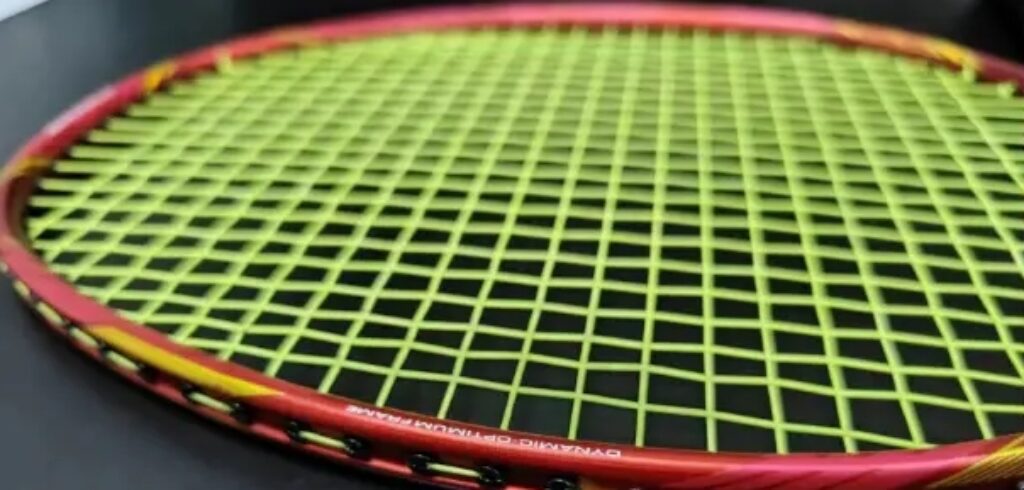“Good-looking exteriors are everywhere, but interesting souls are rare.” This phrase reflects a sentiment that while the latter part is undeniable, I just like beautiful things.
For many beginners selecting a racket, looks aren’t enough; it also needs to be from a reputable brand. Before improving their skills, they often rely on equipment to make a good impression. Ideally, if the racket is also easy to use, durable, and versatile, that would be perfect.
Wanting it all might seem a bit unrealistic. The result of such unrealistic expectations is often like my own experience: spending over four hundred on a low-end racket that didn’t meet expectations.
However, after a productive weekend, I think I might actually have a viable option…

Specifications:
- Weight: 3UG5
- Total Weight (used condition): 95.65g
- Balance Point: 293mm
- Shaft Length: 220mm
- Stiffness: Medium to low
- Frame: Box frame
- String Bed: 72-hole
- Wind Tunnel: 5 and 7 o’clock
- String Groove: 9-3 o’clock
- Warranty: 30 pounds
- String Tension: 26lbs Li-Ning No. 5 string
Does Li-Ning like the color red? Obviously, their logo is set against a red background, not to mention the color schemes from their first wave of N55 series. While the Wind Storm 4000B is a mid-range model, it also features a bold red design, reminiscent of the Energy 80 that many players find visually appealing. Aside from the color similarity, the racket inherits the high-quality paint Li-Ning is known for. The paint is delicate, refined, and has a metallic feel, with good durability. Apart from the golden stickers, the frame has a subtle dark pattern that you might want to appreciate up close.

The 3U weight might deter some players, but if you want a reputable brand, good looks, and a racket that’s both powerful and fast, you have to be realistic. Despite its 3U weight, the Wind Storm series is designed for control, and for the 4000B model, the 293mm balance point is very user-friendly. It feels solid in hand without being hindered by excessive swing weight. The 72-hole string bed ensures a large sweet spot. While the swing speed isn’t outstanding, the two wind tunnels provide smoothness, which is sufficient.
Try hitting a few high clears, and if you’re a male player over 14, if you don’t manage to get the shuttle to the baseline with the correct technique, consider it a loss. The response of the shuttle on the string bed isn’t extremely crisp but has a noticeable dwell time, indicating that the shaft’s stiffness is not high. However, the thick shaft suggests it shares the common issue with many Li-Ning rackets of that era: a wooden feel.

Let’s break it down: the B suffix denotes a more balanced racket in the series. Honestly, it reminds me of the feel I had with the Wind Blade 900B, though the wind resistance and swing weight aren’t particularly low, and the swing speed isn’t high. It feels quite nimble and stable for flat drives and blocks, making it suitable for mixed doubles players who can effectively pressure opponents with their backhand.
The racket’s somewhat sticky string bed also helps with close net shots and high-point smashes, making it crucial for shifting between offense and defense. After adapting to the 4000B, I found myself able to play effective low net shots and even challenge myself with high-to-low net transitions. Some players might find it a bit heavy, but in my experience, the 4000B handles defense well, allowing for effective returns and powerful smashes.

I know you like powerful smashes. Responsibly speaking, it is the most comfortable and efficient racket for smashes among all the rackets I tested on the day of the review. Compared to the Xiao Gui Zhan, it has smaller forward and backward swings; compared to the Speed 98K, it has better directional control; and compared to the NF800, it’s easier to drive. I’m not saying it’s better than the other three, but once you get it to the right height, the Wind Storm 4000B does deliver, with a solid feel and effective smashes that opponents find hard to return. The only discomfort is that the shuttle’s trajectory is flatter compared to other rackets, possibly due to its balanced design. However, adjusting to this is not impossible. The Wind Tunnel 5000 might be stronger in downward pressure, but it’s less commonly used.

Here’s a tip: after a couple of powerful smashes to intimidate your opponent, a well-executed flat high shot or drop can be even more effective.
I understand that many beginners prefer to use rackets from the big three brands even if they don’t offer the best value or quality, as the brand logo gives them confidence. If the racket also looks great, that’s a bonus. And if it performs well, that’s perfect. According to my recommendation, it’s worth the extra investment. If not, consider the 4000B and make your choice.


Leave a Reply